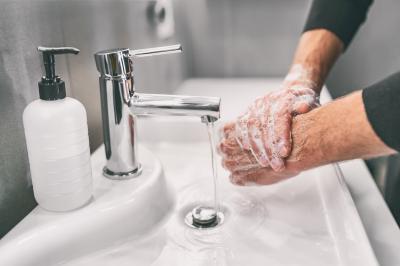A COVID-19 Action Plan for Individuals
Don't be scared; be smart
Scared of COVID-19? According to Dr. David R. Price, a critical care intensivist at New York City's Weill Cornell Medical Center, you shouldn't be. The 1,200-bed facility, regarded as one of the Big Apple's best in surgical procedures, has been transformed exclusively into a coronavirus care unit as the city has dealt with 36,221 confirmed cases and counting (as of Mar. 30). Instead, he urges community members across the country to simply be carefully aware.
"Almost exclusively what I do all day long is see people with COVID-19," confirmed Price in a Zoom call shared with University of Rochester Medicine providers. However, the knowledge gleaned from that experience has been empowering and even liberating. "We're learning … and every single day we're getting better … when this comes to your community, you don't have to be scared and can protect your family."
Although we've been inundated with information concerning COVID-19 (and very well may be growing weary of it) it's comforting to hear someone on the frontlines put forth such a clear, firm action plan for staying healthy — or in the unfortunate event of infection — helping others stay that way.
What is COVID-19?
COVID-19, also known as SARS-CoV-2, is from the coronavirus family — to which many common colds belong. The difference is this is a variety "the human body has never seen," owing to its origins within another animal. The most common symptoms are fever, cough, and sore throat, and the lungs are most affected.
Of the hundreds to thousands of patients Price has seen, about 80 percent of them "just don't feel good" for a period of five to seven, or up to 14 days. Some people will develop shortness of breath between days three and five; most will begin to feel better within a week.
Watch Price's video here. Below is a longer YouTube clip:
How do you get COVID-19?
The mode of transmission is very simple — from one's hands to one's face. When you touch a contaminated person or surface, you pick up droplets carrying the virus, which can invade the body through your eyes, nose, or mouth.
Price dispels the myth the disease is just hanging in the air as a sort of COVID-19 cloud, waiting to cling to victims. Instead, it is most often communicated through sustained exposure (15 to 30 minutes in close quarters) to people either a) experiencing symptoms or b) a day or two away from the onset of symptoms. This is why the most rapid spread is often intra-household.
How do you avoid COVID-19?
Price offers a few simple tips to prevent infection:
- Know where your hands are: Be cognizant of what you are touching, especially when you are in public or living with a sick roommate or family member.
- Know your hands are clean: Carry sanitizer with you if possible in public and disinfect your hands after touching another person or a shared surface. If you have access to soap and water, even better — recall that 30 seconds is ideal.
- Face touch responsibly: Face-touching rarely even enters the realm of conscious thought; we do it so often that we're not even aware that we're doing it. But you need to change that. The main point of wearing a mask (of any kind) in public is not to so much avoid aerosolized coronavirus (hence why you don't need to deplete the healthcare community's supply of surgical masks); it's to help rewire your brain against the fidgety or idle behaviors that could get you sick.
- Social distancing: Give six feet of clearance in public, and keep your social circles to a minimum (Price recommends an isolation group of no more than three or four individuals). Those who are physically maintaining extensive social circles or attending big gatherings are those most likely to contract COVID-19.
What should you do if you get COVID-19?
Although COVID-19 can be life-threatening, realize that for most people it is not a death sentence. However, even if your symptoms are mild, you still need to respect the fact that others may respond much worse — especially those within vulnerable populations such as the elderly or the immunosuppressed. Follow these protocols to limit transmission of COVID-19 to others:
- If you develop a fever or other symptoms, isolate yourself immediately from healthy cohabitants — preferably in a separate room with access to a bathroom that you and you alone will be using for the duration of the illness.
- If you must leave the isolation area, it may be acceptable to wear a surgical mask. Wash your hands thoroughly and ensure that surfaces you come in contact with are properly cleaned and sanitized. Return to your room as soon as possible; avoid prolonged interaction (this goes for would-be caregivers as well).
- Seek hospitalization when experiencing a shortness of breath, which typically occurs three to five days in — a phenomenon seen among 10 percent of patients, Price estimates. Of every 10 people with breathing difficulties, one to three will be admitted to the ICU and put on a ventilator. Most are discharged within a week's time.
- Value taking precautions over testing; if you feel you are coming down with an illness, treat it as if it is COVID-19 and stay home and away from others. If you live with someone in an at-risk population, do your best to arrange an alternative living arrangement temporarily until recovered.
Stay home, stay safe, stay calm
Erie County's population is a fraction of the size of the New York City metropolitan area; nonetheless COVID-19 has infiltrated our community and the number of confirmed cases will continue to climb. By heeding the advice of healthcare professionals and taking the necessary precautions, you can avoid being counted in the statistics.
Matt Swanseger can be reached at mswanseger@eriereader.com




